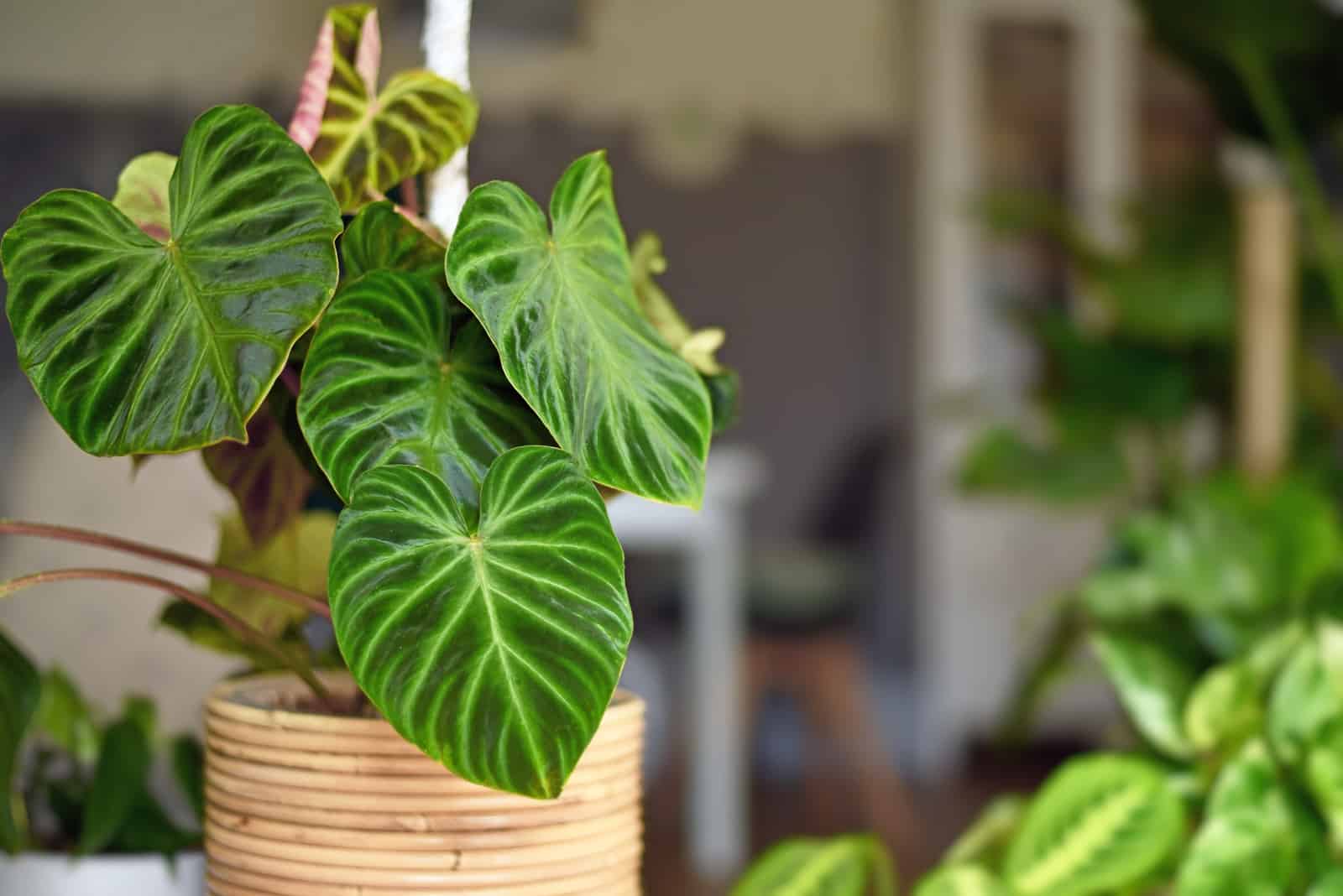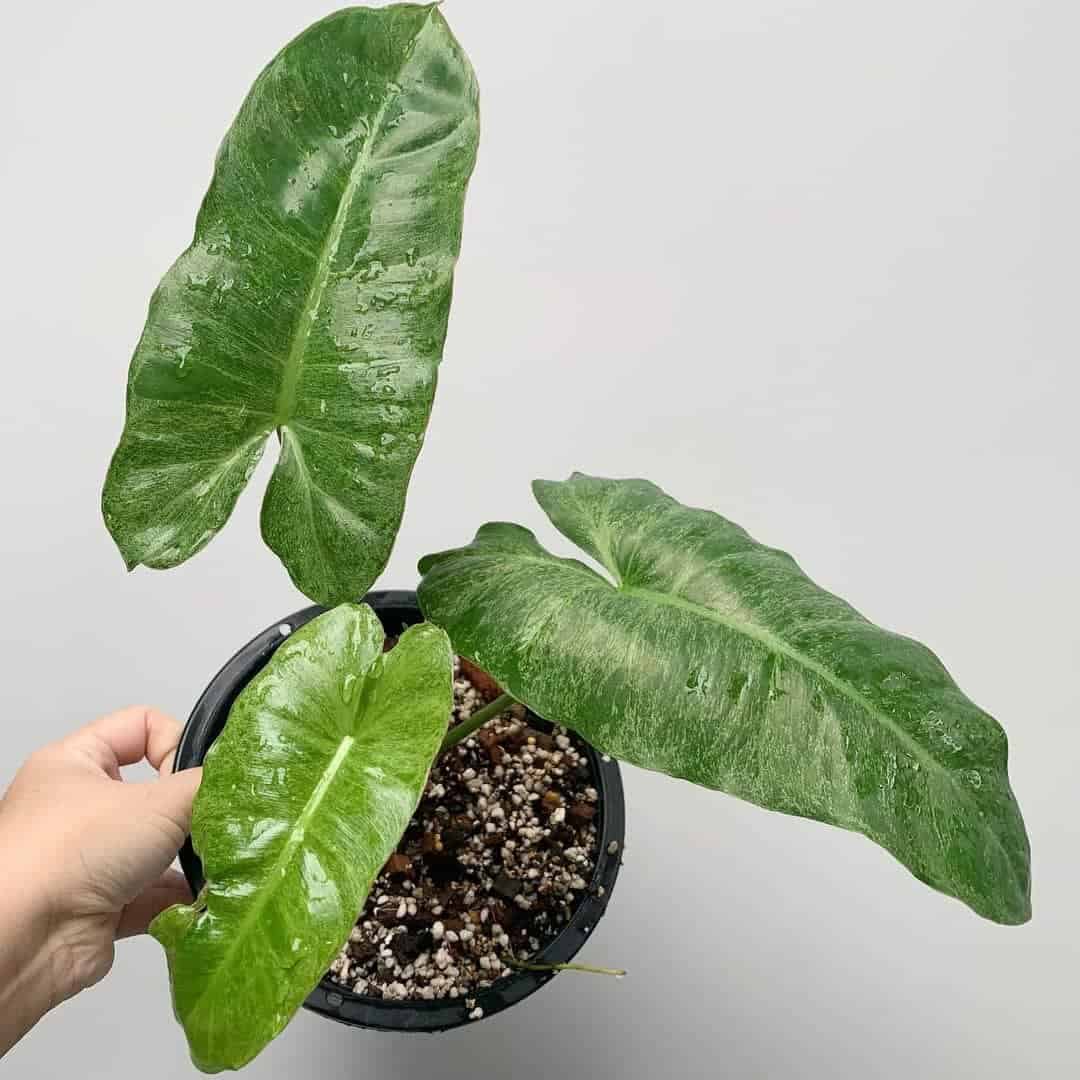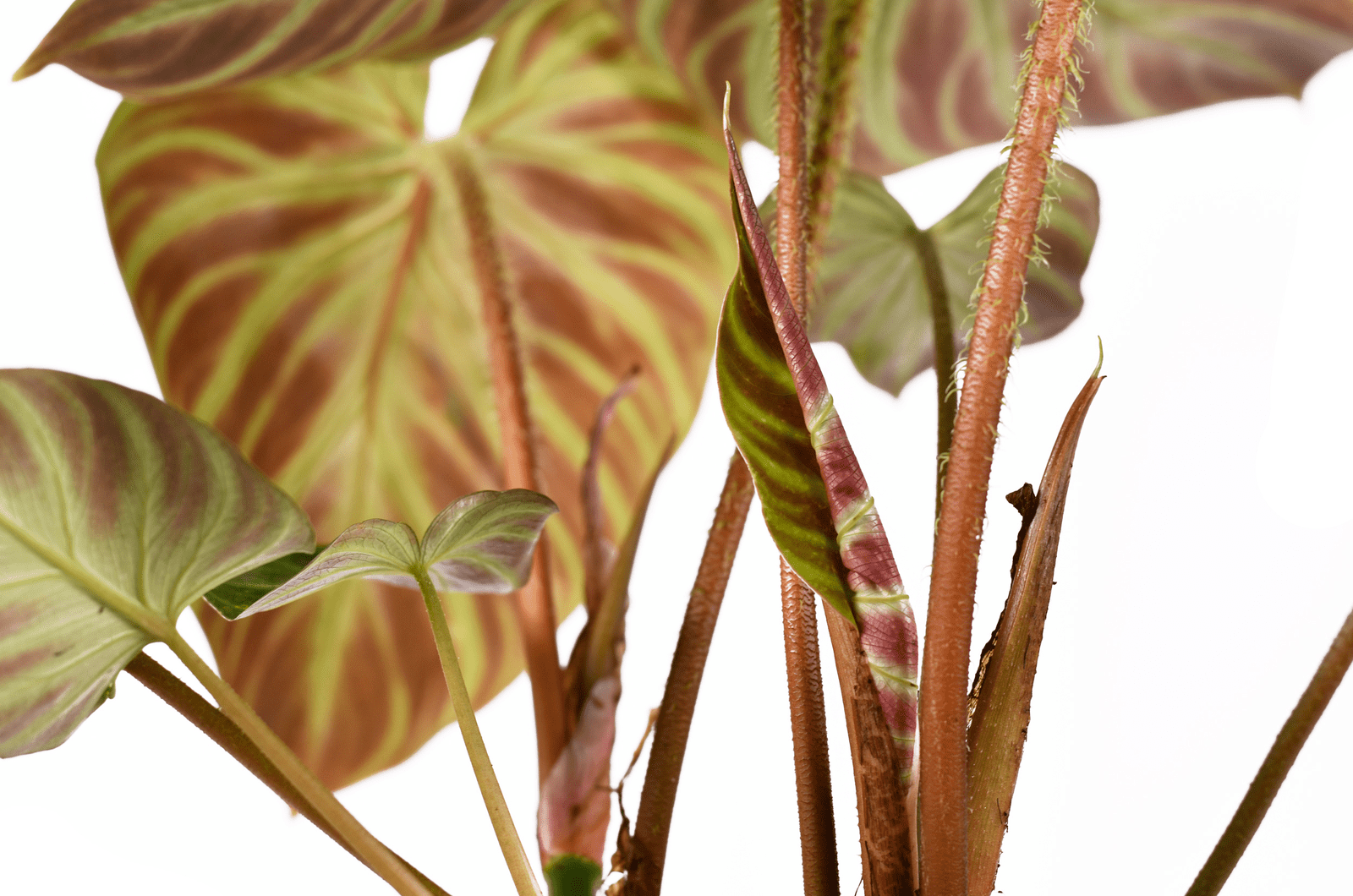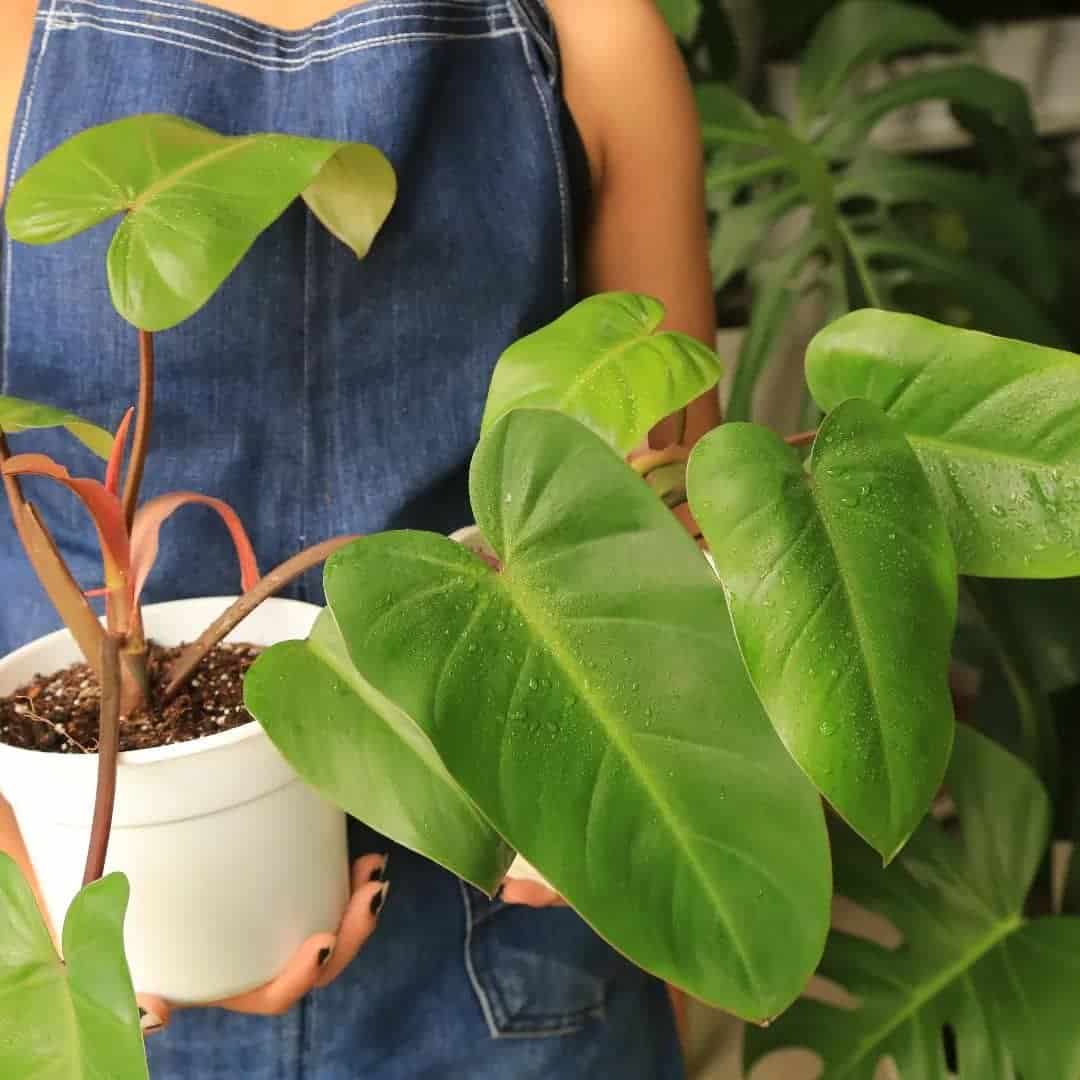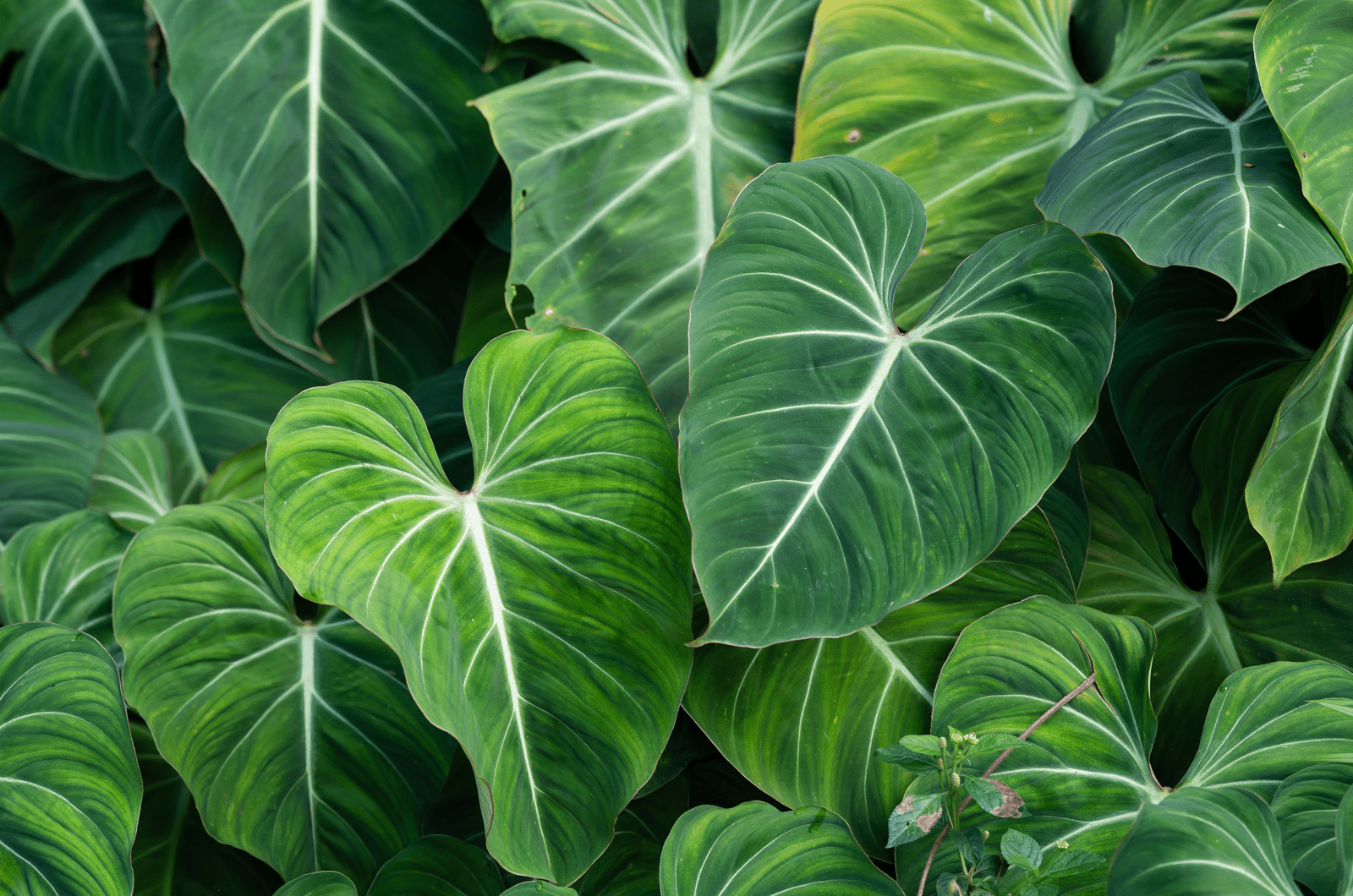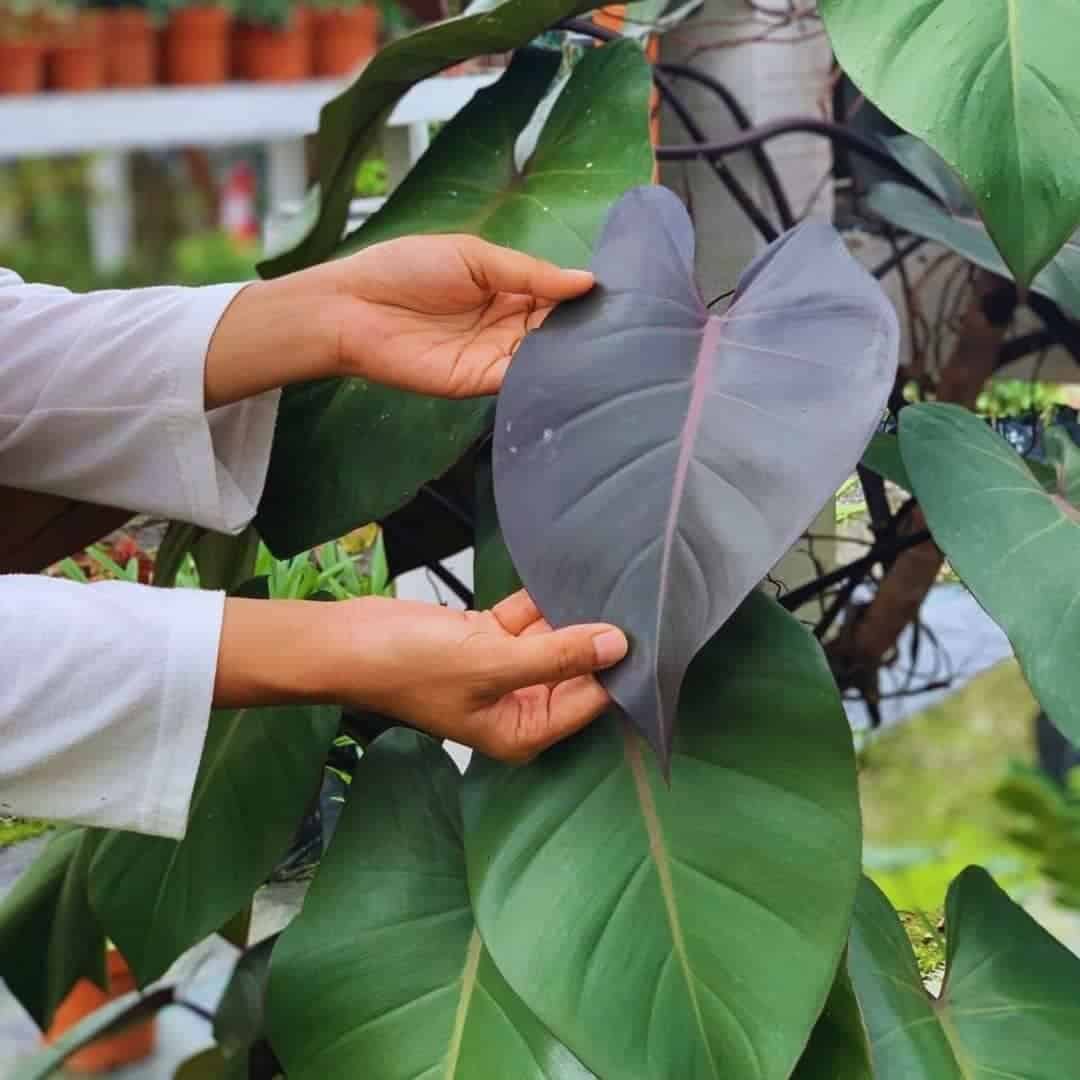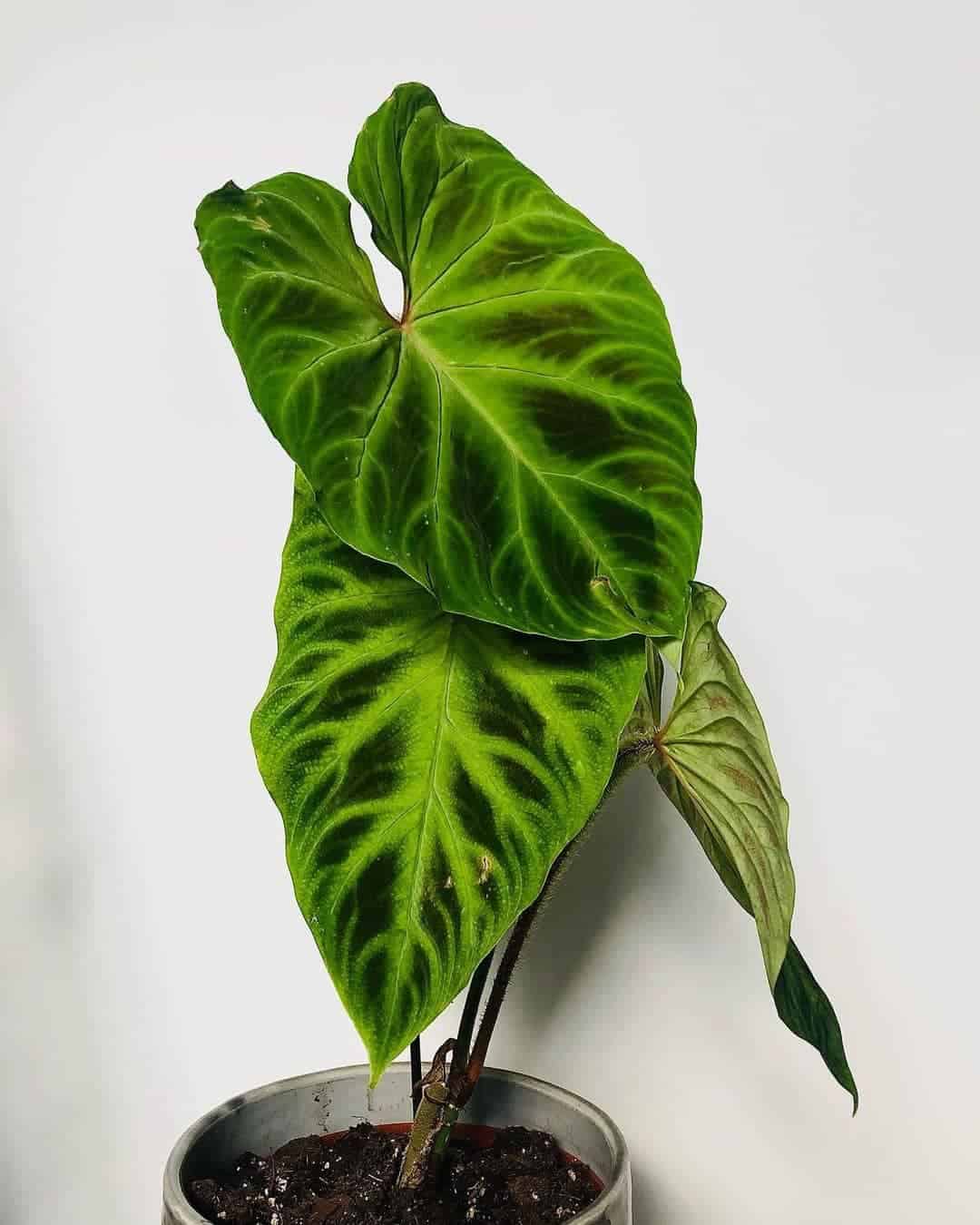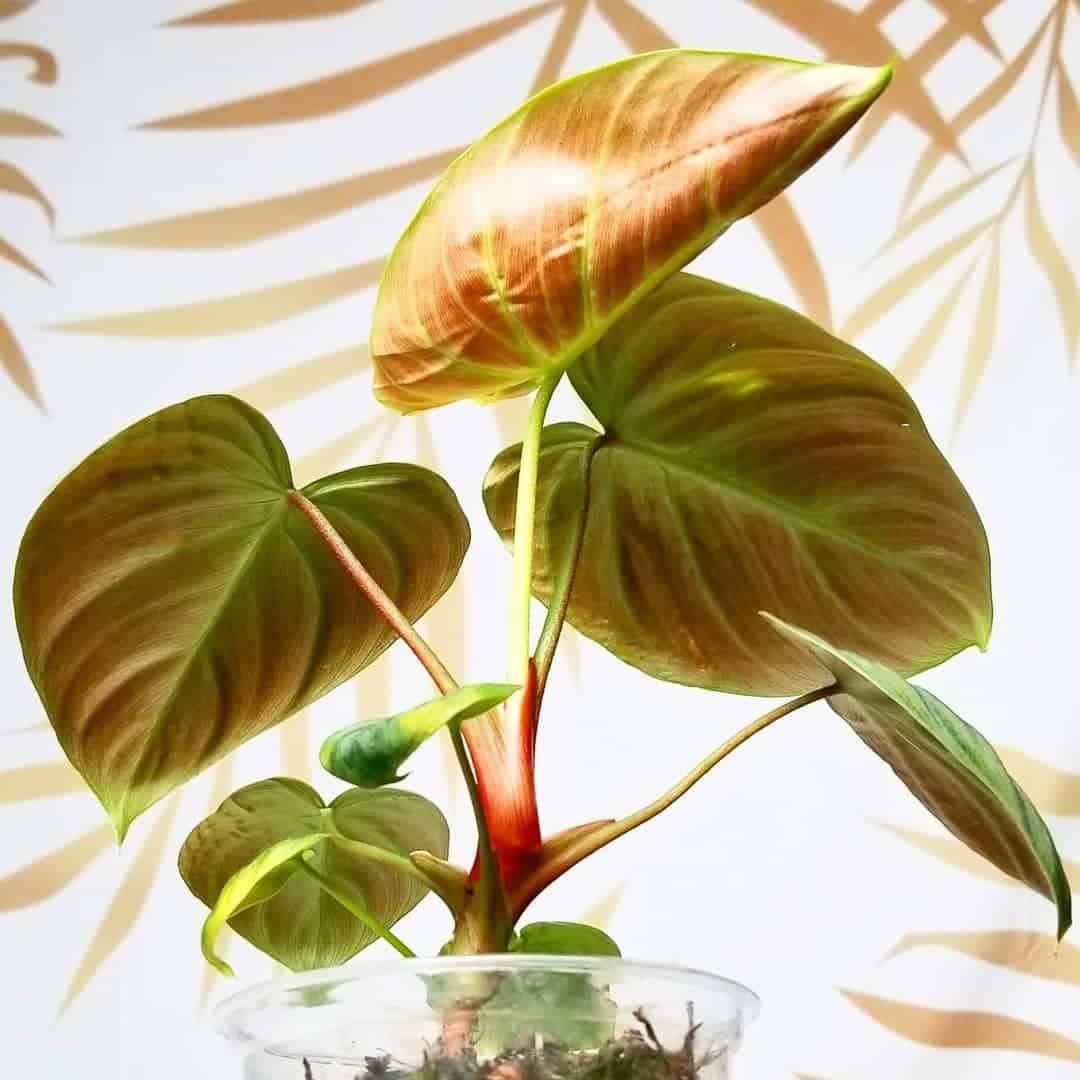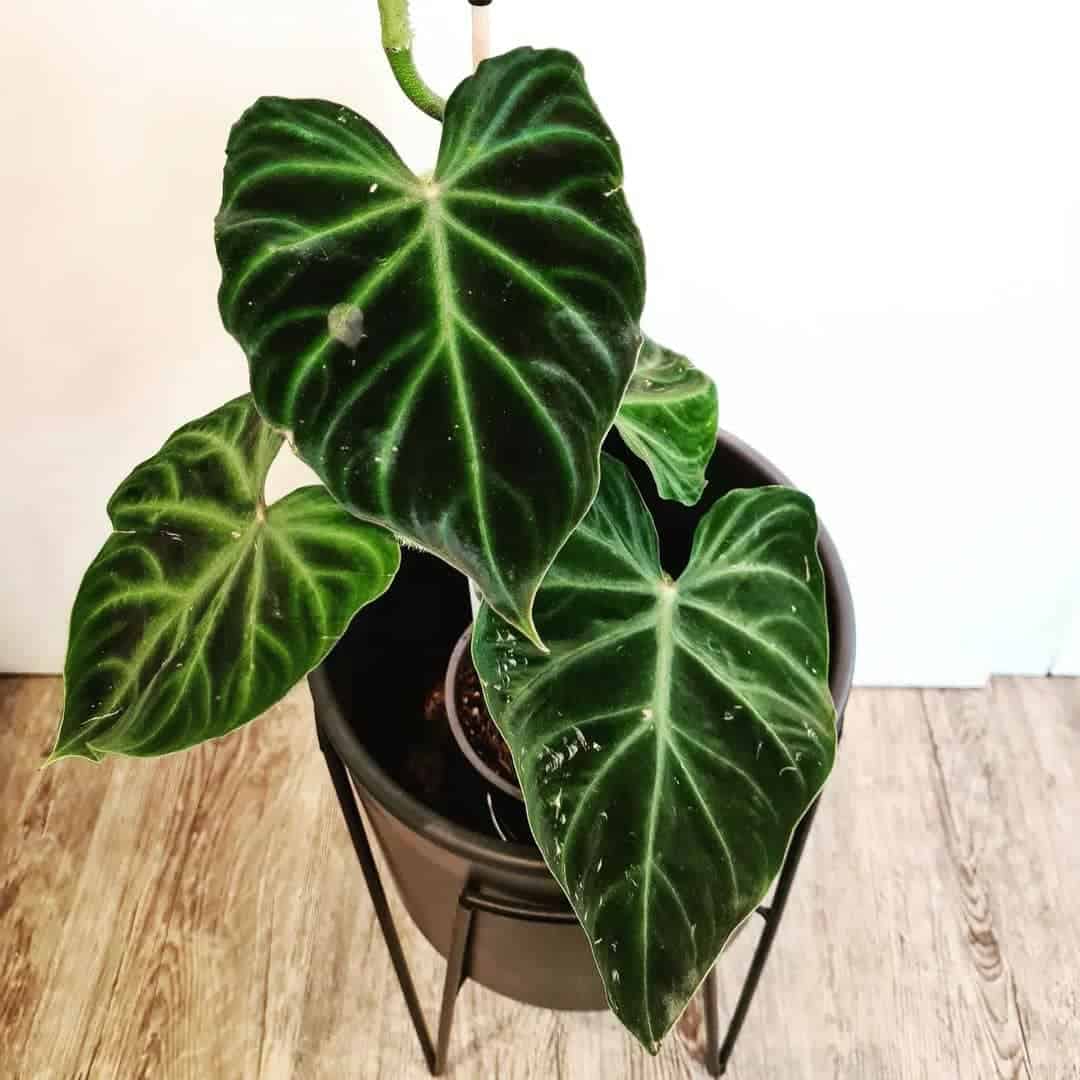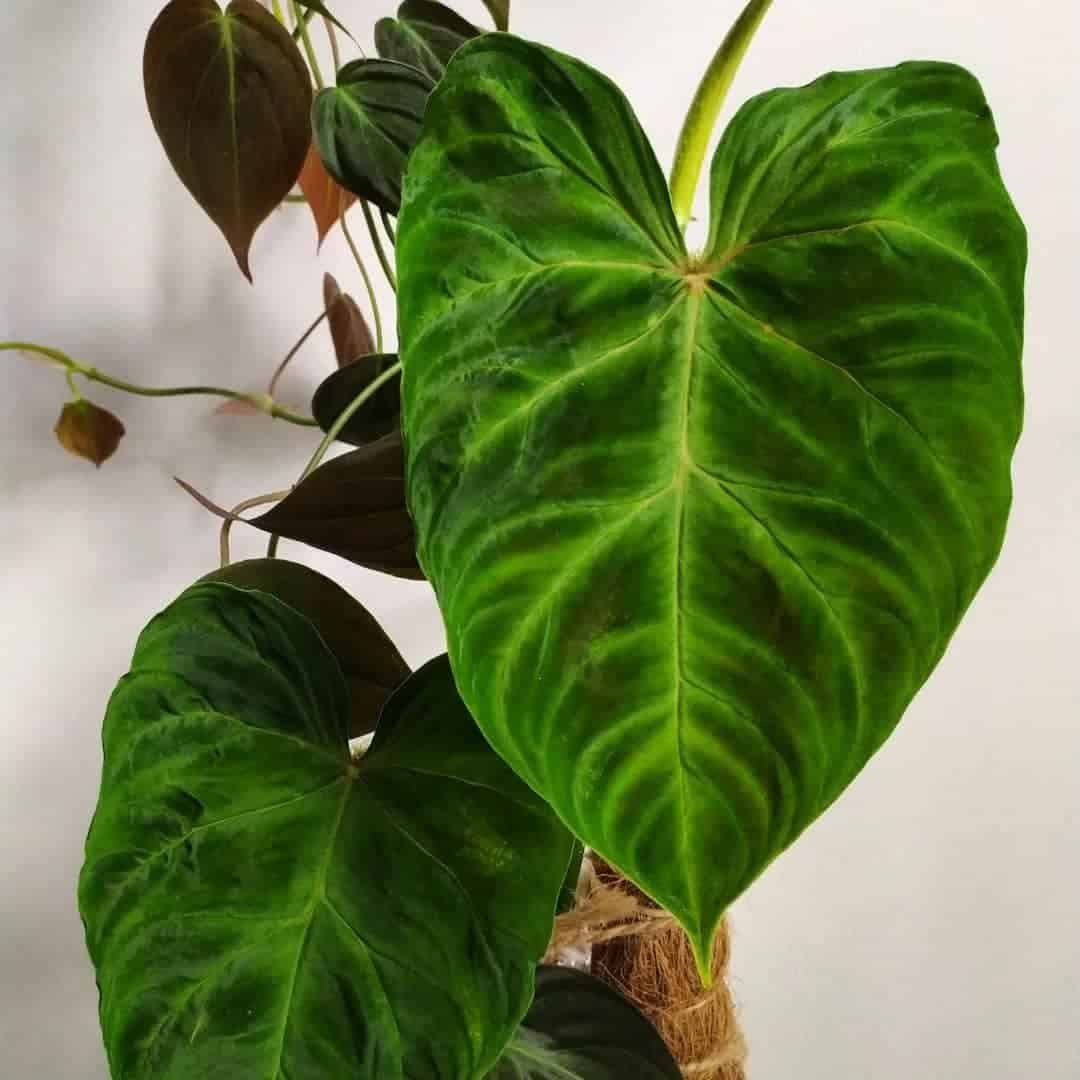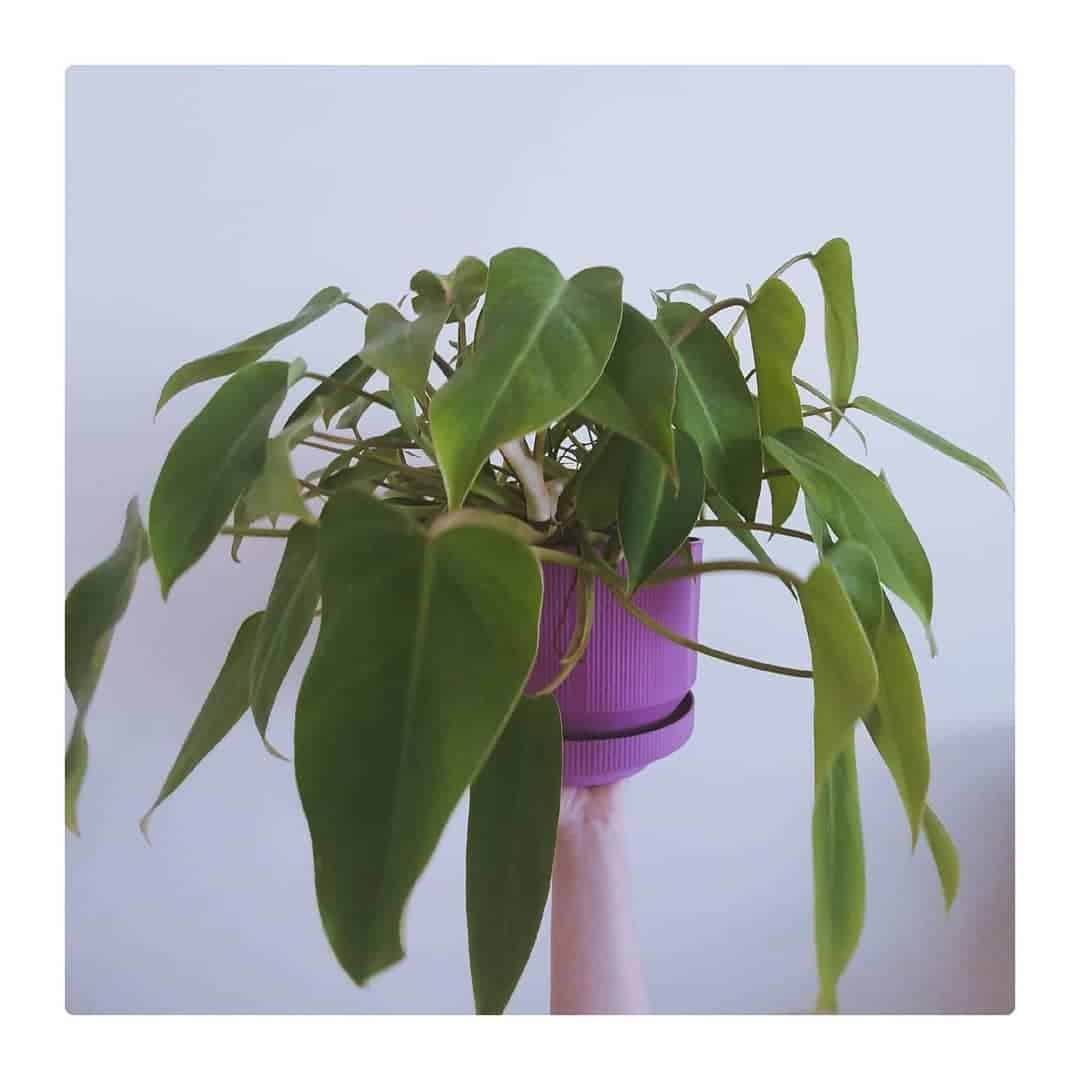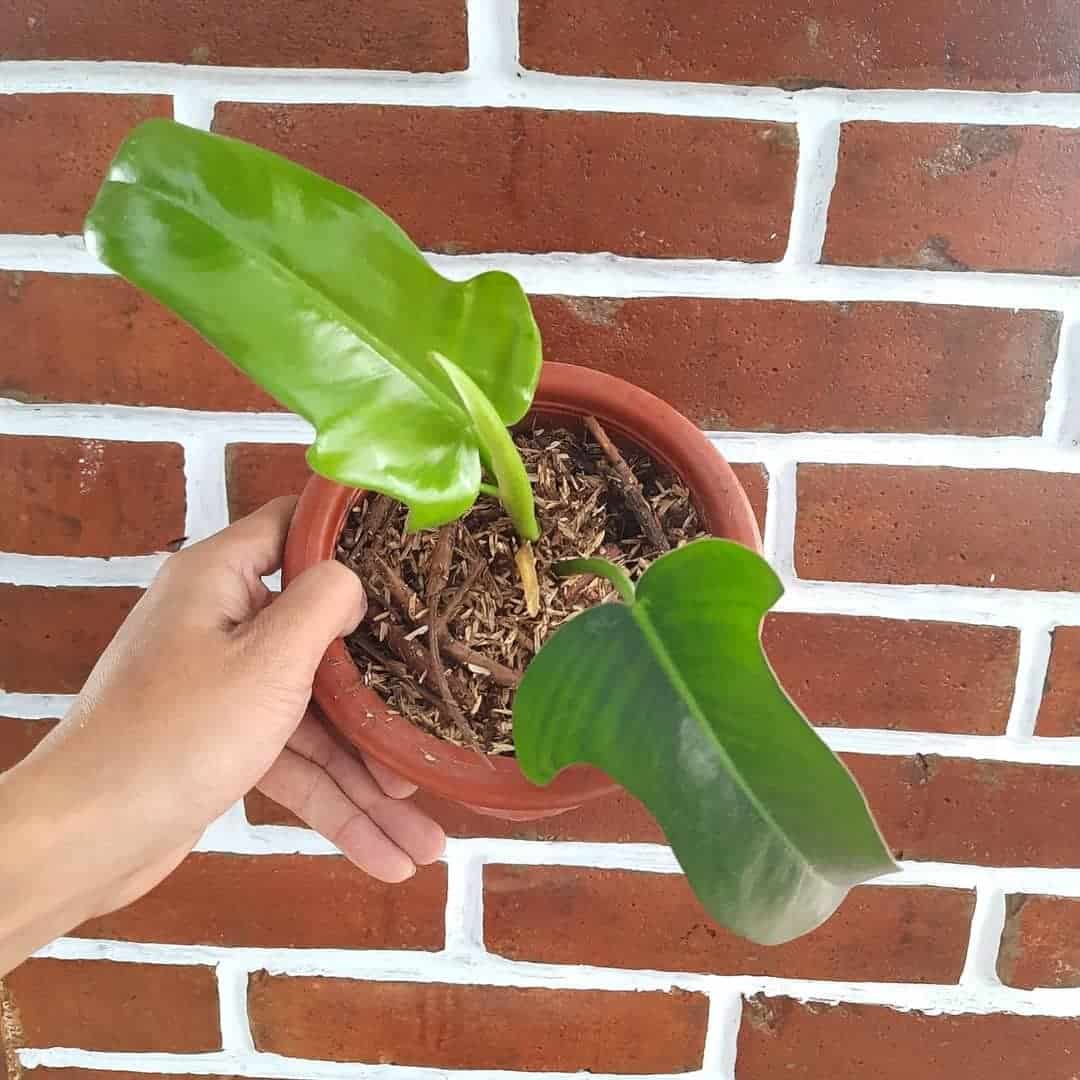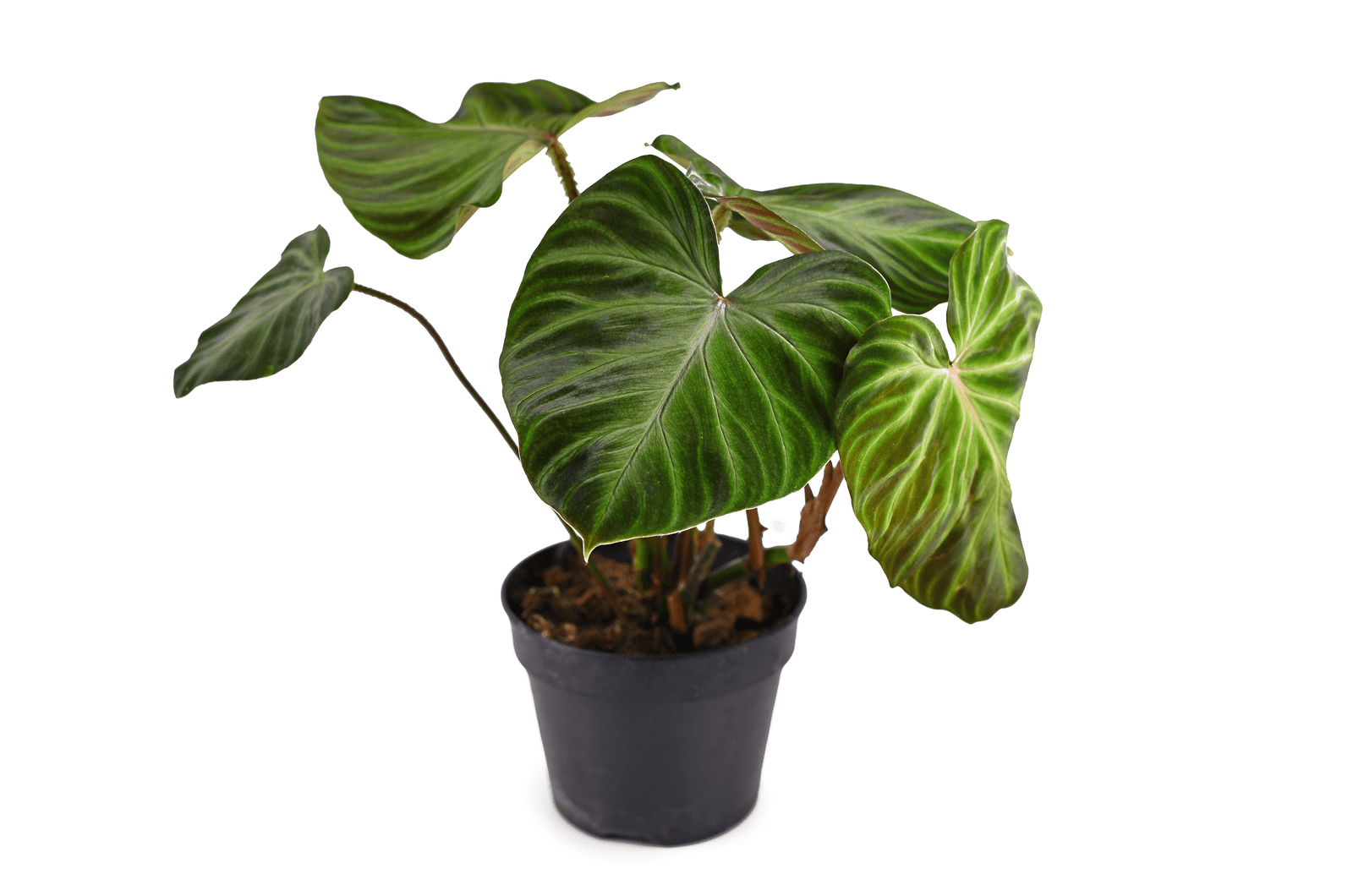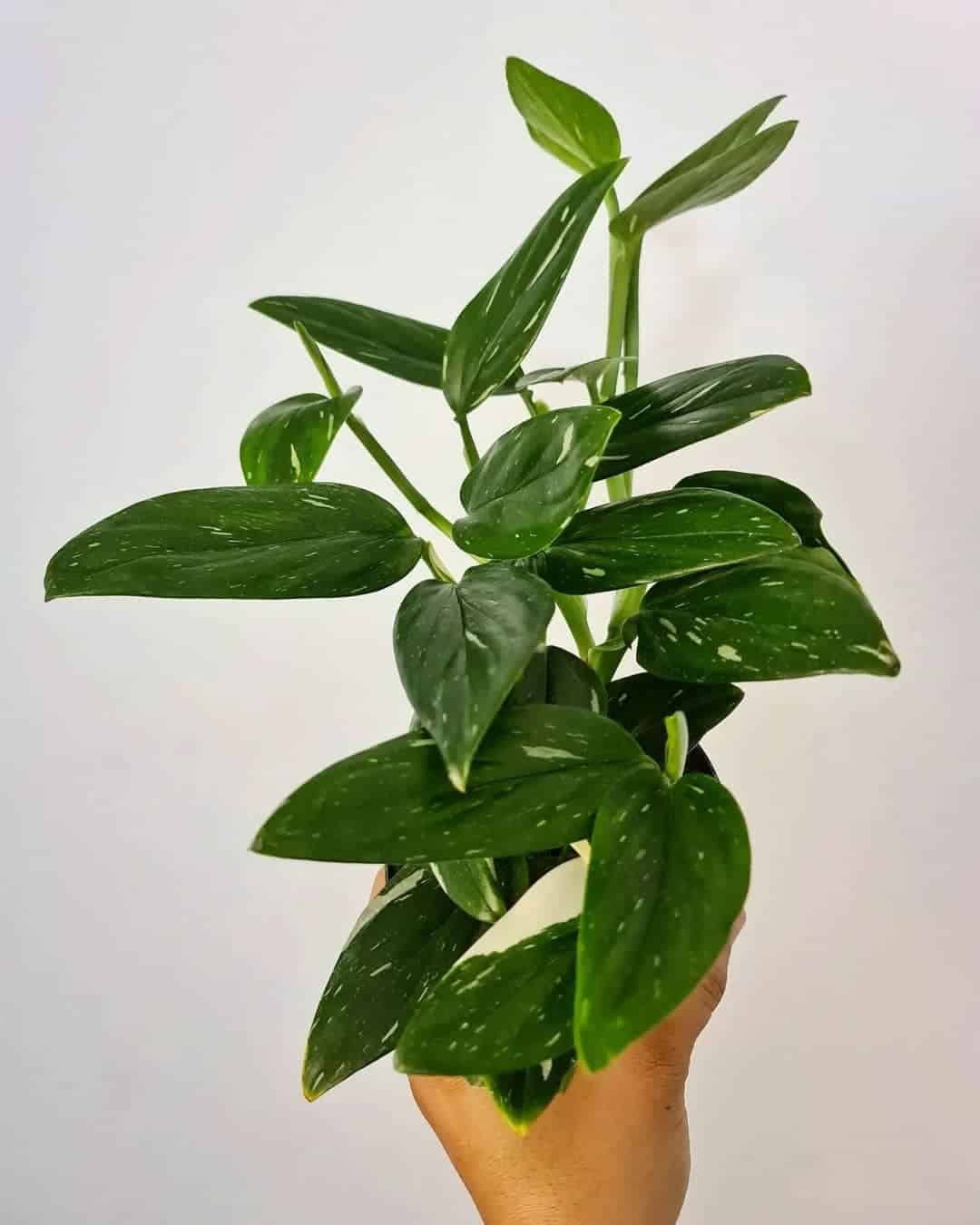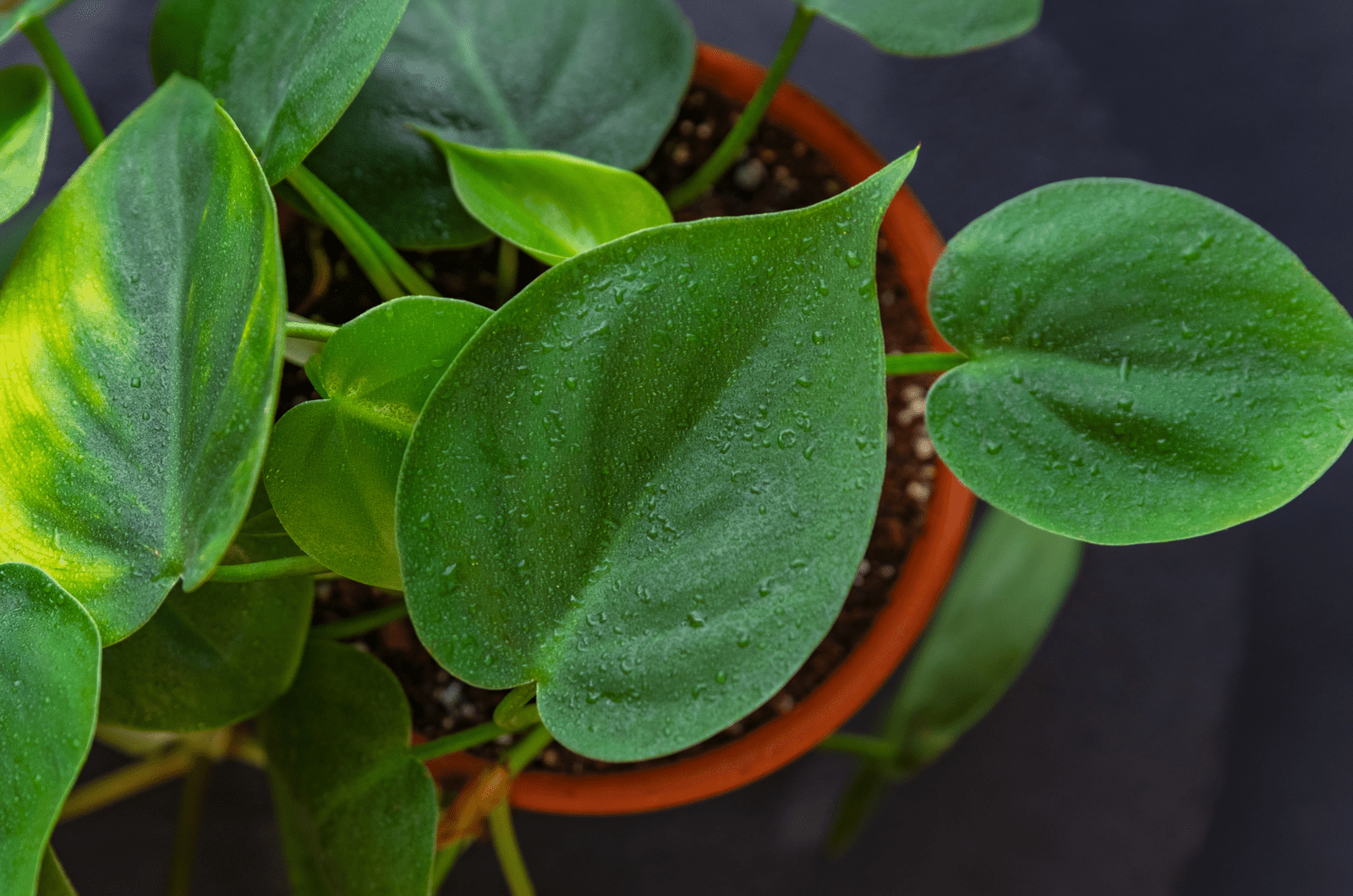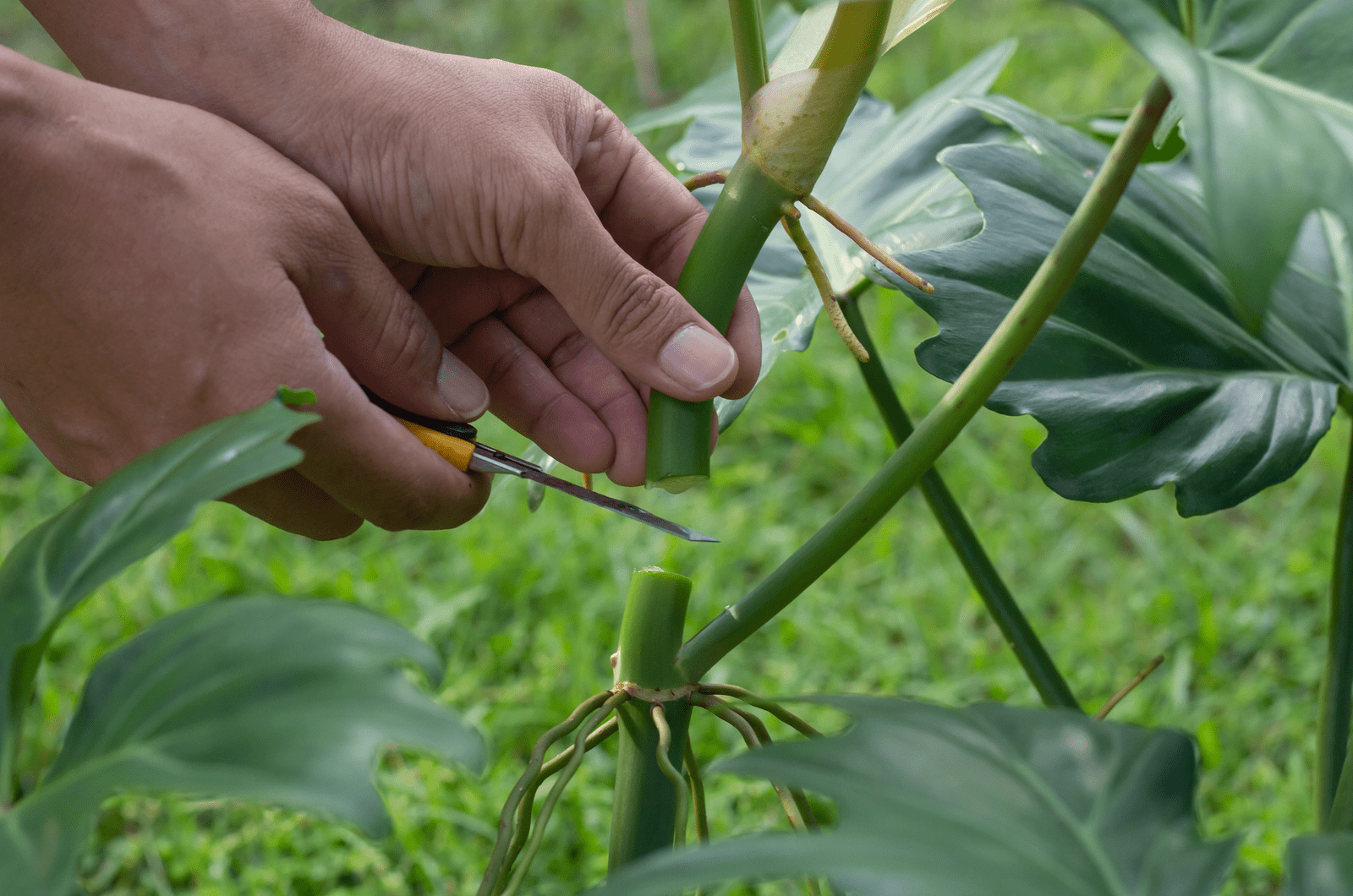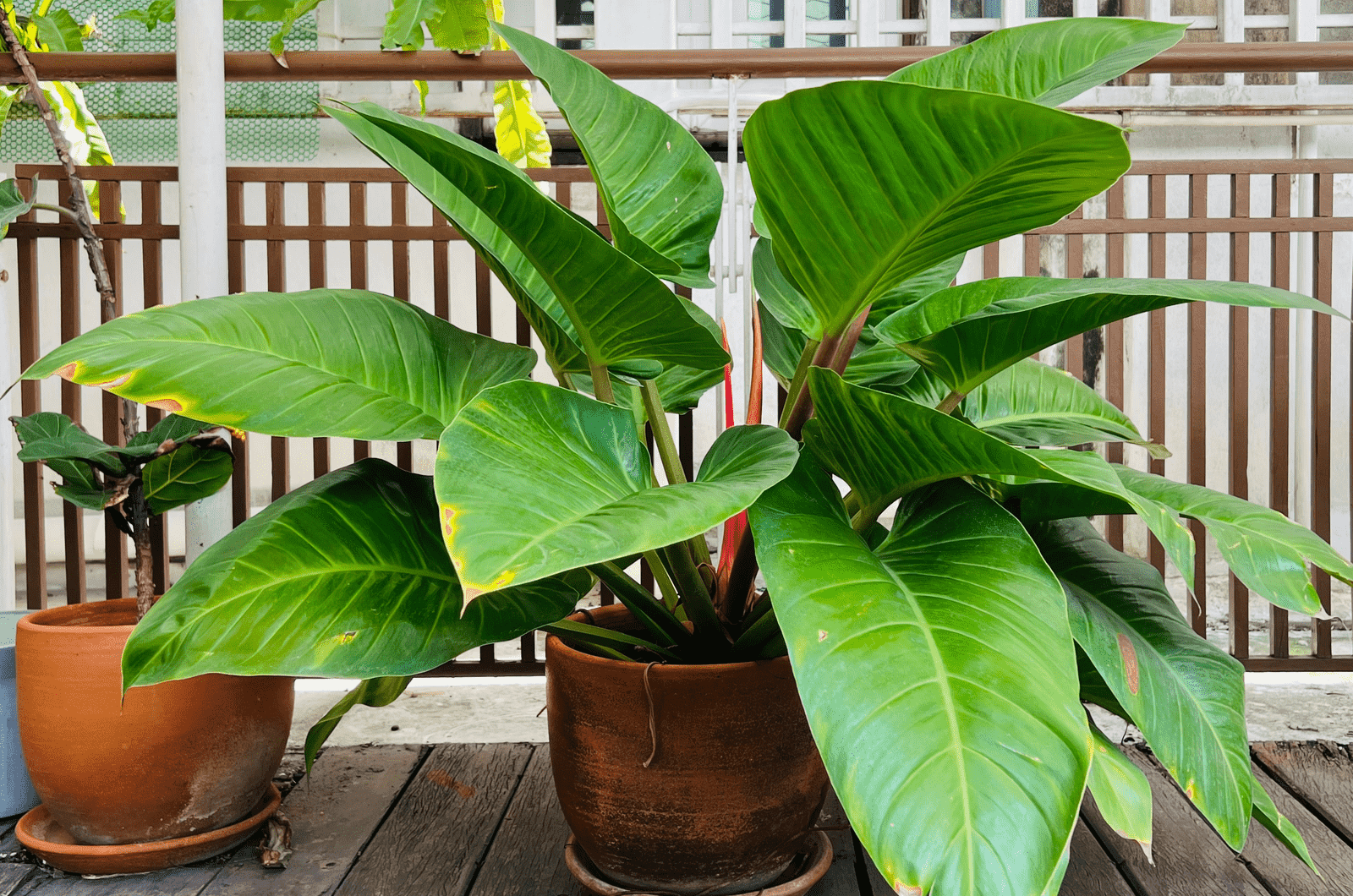I was not into the types of plants as much as I was the original varieties. However, a couple of years of growing experience has given me a new perspective on the subject.
No matter how beautiful the original plant is, the types can be even prettier.
One of the plants with a lot of types is the Philodendron Verrucosum . What’s impressive about these types is that they are similar in appearance, yet unique, and each one will leave you speechless.
Philodendron is a genus that consists of approximately 450 species, so it’s no wonder these plants got so popular and are one of the most common houseplants. All growers can find the shape, size, growth habit, and color they prefer with philodendrons.
Today we are going to talk about the different Philodendron Verrucosum types and their features. We will also discuss the verrucosum itself and its care guide because all the types of this plant require similar conditions to grow strong and healthy.
Before moving on, let’s look at some basic info about this species:
[table id=189 /]Let’s get started!
13 Philodendron Verrucosum Types
What does the Verrucosum look like? It’s a climber with fascinating heart-shaped leaves that come in various colors depending on the type.
As well as the types, this Philodendron is used to create hybrids. Today we have Philodendron majestic (Verrucosum x Melanochrysum), Philodendron splendid (Verrucosum x Sodiroi ), and the less common P. Verrucosum x Giganteum.
However, in this article we will only be discussing Verrucosum varieties .
Let’s take a look!
1. Philodendron Verrucosum Verde
Photo from: @im.plantable
However, the shade of red differs from one of the original plants; it’s brighter and perfectly combines with the dark green leaves .
Additionally, the veins of the Verde plant are paler and not as noticeable as the standard plant.
This is actually a result of the humidity level this plant requires. Compared to the standard plant and other varieties, this plant requires higher humidity and won’t survive in the regular conditions in our homes.
Verde has a slower growth rate than other varieties.
2. Philodendron Verrucosum Carmine
Another fascinating verrucosum type is Carmine. In the juvenile stages of the leaves the frontside is reddish-orange, so people say the Carmine’s leaves resemble a sunset.
As the plant matures, the leaves turn different shades of green.
White veining and brownish-red undersides make this verrucosum type one of the prettiest.
Stems and petioles are also in shades of red, which makes this variety really stand out.
3. Philodendron Verrucosum Esmeralda
Photo from: @fridagarden_
These varieties got their names because of their native habitat, Esmeraldas, Ecuador .
Esmeralda 1 has large dark green leaves with tea-green veining and yellowish-green petioles .
Esmeralda 2 has leaves that are curled and twisted into lovely ruffles. Compared to Esmeralda 1, Esmeralda 2 doesn’t have veins that are as striking.
4. Philodendron Verrucosum El Valle
Verrucosum El Valle is a tropical plant native to Valle in Ecuador . It is actually a dwarf variety and can grow up to 4 inches.
Both sides of the El Valle’s new leaves are reddish-brown.
El Valle enjoys higher humidity levels, which makes it perfect for kitchens, bathrooms, and terrariums .
5. Philodendron Verrucosum Rojo
Photo from: @filosofipokok
Rojo is one of the easiest verrucosum types to identify due to the color of its leaves.
Deep green leaves , red undersides, whitish veining, and hairy stems are the reason this cultivar should be a part of every plant collection!
6. Philodendron Verrucosum Bosco
Photo from: @jekkiestekkie
The Bosco has dark green leaves with bumps, and its stem is quite hairy and pale compared to other varieties.
Additionally, the Bosco’s magnificent vines grow in a spiral pattern.
7. Philodendron Verrucosum Red Back
Photo from: @littlemissplantgirl
Verrucosum Red Back produces pale heart-shaped leaves in its juvenile stage, and as the plant matures the leaves turn green.
You will see the amazing, tall, and hairy petioles that give this Philodendron a touch of glamor.
The reddish-purple undersides of the leaves make this variety stand out.
This plant adapts well to all household conditions, which is why it has become so popular among plant growers and collectors.
The plant is native to Central and South America and can reach 50 feet in its natural habitat.
Due to its low-maintenance requirements, this plant is ideal for small homes and offices.
8. Philodendron Verrucosum Panther
Photo from: @fromchrissiewithleaf
I assume you think this section will be about some black variety. Well, the Verrucosum Panther isn’t really black, but is darker than other Verrucosum varieties .
Panthers look powerful and mysterious, and so does this Philodendron.
However, Panther Philodendron has its sensitive side; the undersides of the leaf blades are pinkish-red with green veins.
The Panther plant is native to the rainforests of Central America .
9. Philodendron Verrucosum Tambillo
Photo from: @buszujacy_z_polski
Compared to other varieties, Tambillo has more oblong leaves.
Tambillo is a climber and can grow up to 3 feet , so a moss pole or some alternative is a great option. In that way, the leaves will shine even more!
10. Philodendron Verrucosum Purple
Photo from: @bei.roots
If you like the color purple and are a plant lover, I have the perfect plant for you! The Verrucosum Purple variety produces reddish-orange leaves in its juvenile stage.
As the plant matures, the leaves turn from dark blue to purple.
This is a slow-growing variety and can grow up to 3 feet, and the leaves can reach about 4 inches.
This is a dwarf variety according to its leaf size .
11. Philodendron Verrucosum Canoe
Photo from: @monstera.shop
I’m sure you’ve seen the Philodendron Canoe, otherwise known as Philodendron Ecuador Canoe. Many growers don’t know that the Canoe is actually a type of Verrucosum.
This plant has stems that can grow to one inch in diameter and long leaves that are reminiscent of an Ecuadorian canoe. The leaves can grow up to three feet when the plant is provided with adequate support.
The leaves grow on top of the vines and have a web-like pattern. The undersides of the leaves are grayish-white.
12. Philodendron Verrucosum Incensi
Another eye-catching variety from the Verrucosum species is Incensi. Its native habitat is Central America and the Caribbean. However, this type of Philodendron is cultivated all around the world today.
This type has elegant dark green leaves with light green or whitish veins and reddish undersides.
13. Philodendron Verrucosum Cobra
Photo from: @jassimalsafar
This variety has long and slightly wavy leaves and impressive white veins.
Philodendron Verrucosum Care Guide
Now that you know the different types of P.Verrucosum , it’s time to look at the requirements you need to meet if you decide to grow these plants.
Verrucosum grows at an altitude ranging from 165 to 6,550 feet above sea level , which is why this plant adapted well to average household conditions.
Don’t worry, these plants aren’t fussy, and they will thrive in no time with proper care.
Let’s find out more!
Light
Verrucosum plants require bright indirect light . The only thing you need to pay attention to is the spot you put them in.
The best would be to choose a place where direct sunlight can’t reach the leaves as it may cause sunburn. However, Verrucosum will benefit from morning sun if placed in an east- facing window .
On the other hand, low light can cause your Verrucosum to display stunted growth and a leggy appearance.
Humidity
Verrucosum is native to rainforests, which means it is used to high humidity .
When grown as an indoor plant , Verrucosum needs higher than average humidity – in other words, at least 50% humidity is required for optimal growth.
Here are the signs your Verrucosum needs more humidity:
• Scorched leaves
• Leaf curl
• Drooping plant
If you spot any of the signs above, it’s time to raise the humidity levels.
Here are 5 ways to increase humidity:
1. Create a microclimate by grouping the plants. If you grow Monsteras , place them next to your Verrucosum.
2. Mist your plant.
3. FInd a new place for your Verrucosum. For example, move it to a kitchen or bathroom.
4. Place a pebble tray under the pot.
5. Purchase a humidifier . Although this device may seem expensive, I highly recommend purchasing one as they monitor and maintain the humidity levels needed for good Verrucosum growth.
Temperature
The ideal temperature for the Ecuador Philodendron is from 60 to 85 degrees Fahrenheit.
Temperatures shouldn’t drop below 55 degrees Fahrenheit as this plant is sensitive to cold.
Temperature fluctuations, heat stress, and cold drafts may damage the plant or affect its growth, so avoid placing a Verrucosum near air conditioners, vents, or open windows during the colder months.
Soil
The perfect soil for this Philodendron species is porous, well-draining, and rich in organic matter.
Potting soil should have a pH that is slightly acidic to neutral.
One of the options when it comes to the soil is planting Verrucosum in an aroid soil mix .
You can actually make your own potting mix by adding materials that improve drainage, aeration, and retain water.
For example, you can add perlite to improve drainage, peat moss to help the soil retain water, orchid bark to improve aeration, and compost to ensure nutrients.
Watering
If you want your plant to grow healthy you should keep the soil moist. However, waterlogged soil is something you definitely want to avoid as it may cause root rot .
There is one easy method for checking if the plant needs more water; place your finger in the soil, and if the soil is 2-3 inches dry it’s time for watering.
I suggest you water your Verrucosum plants slowly. In other words, don’t pour all the water you prepared at once, but instead water slowly until you see excess water running out of the drainage holes.
If there is water left in the saucer below the pot, I recommend you discard it.
Fertilizing
You will need to fertilize your Verrucosum approximately once a month during the growing season. The best idea would be to use a balanced liquid fertilizer such as 10 10 10 or 20 20 20.
However, it would help dilute it to half a strength to avoid overfertilizing your plants and burning them.
You can also use a slow-release fertilizer in early spring, just be sure to always follow the directions on the package.
Pruning
Verrucosum needs occasional pruning. In other words, you should prune only diseased, dead, or damaged leaves.
I also recommend cleaning the leaves regularly.
If you prefer a particular shape or size, you can cut back the Verrucosum stem a maximum of 25%. For this purpose, prune the leaves in early spring.
Repotting
Verrucosum requires repotting every 2-3 years. However, if the roots start growing out of the drainage holes or they are tangled, your Verrucosum has become rootbound .
When choosing a pot, look for a larger pot that isn’t more than 2 inches bigger in diameter.
I also highly recommend purchasing a pot with drainage holes, and if it doesn’t have any you should drill some yourself.
Staking
I mentioned that Verrucosum and its varieties are climbers , so they should have some kind of support to grow healthy and reach their full size.
You have plenty of choices when it comes to support. For example, a moss pole , totem, or trellis will do wonders.
How To Propagate The P. Verrucosum
Verrucosum is an excellent plant for cloning, which is why it has many varieties. It is also used to create hybrids.
You can do one more cool thing with Verrucosum – propagate it.
You can use three propagation methods to replicate this Philodendron: stem cuttings , air layering , and growing from seeds.
I will show you two methods – stem cuttings and air layering , as they are way easier than growing this plant from seeds. These two methods are used for the propagation of many Philodendron species, such as Philodendron Gloriosum and Philodendron Camposportoanum.
If you are a beginner grower , I suggest you choose the stem cutting method.
Let’s find out how to propagate Verrucosum!
Stem Cuttings
The first thing you will need is a sharp gardening tool like a knife, a pair of scissors, or some pruners. Take rubbing alcohol or bleach and sterilize the tool.
If you don’t have rubbing alcohol or bleach, you can use an old method for sterilization; holding the tool in a fire for a couple of seconds.
Find a stem with a node attached and cut it to about 8 inches.
Pro tip: Rub some cinnamon on the wound (the stem you just cut) to help it heal. Press the cutting to allow the excess water to drain away.
You can now place the Verrucosum cutting in a jar of water or plant it directly in the soil, sphagnum moss , or any other rooting medium.
Place the cutting in the soil and put the container or pot in a warm place out of direct sunlight .
You should see new roots in about 3-4 weeks. The best time to start propagation is spring or summer (during the growing season).
If you place cuttings in water, change the water every two days.
Air Layering
Find a couple of aerial roots on the nodes and wrap them with damp sphagnum moss .
Cover the sphagnum moss with a plastic bag and poke a few holes in it. Mist the sphagnum moss every two to three days.
Once you can see the root system is formed, plant it in potting soil .
That’s it! Continue with the usual plant care and your new Verrucosum should be thriving in no time!
Philodendron Verrucosum Plant: Common Issues
The plants from the Philodendron genus may face a couple of issues during their growth.
The most common issue is pests, but some diseases and changes in the plant’s appearance can also occur.
Let’s find out more!
Pests & Diseases
Although Verrucosum isn’t prone to pests, some mealybugs, scales, spider mites, or aphids may end up infesting it.
Don’t worry, it’s really easy to get rid of them. You can remove them by rubbing neem oil on the leaves or spraying them with insecticidal soap.
As far as diseases are concerned, the most common ones that affect Verrucosum are caused by:
• Erwinia
• Phytophthora
• Xanthomonas
• Pseudomonas.
Root Rot
Overwatering and poorly draining potting mix may cause root rot , a fatal disease that can kill your plant.
Other signs that indicate your Verrucosum is suffering from root rot are yellow leaves, stunted growth, and drooping leaves.
The best idea would be to check the root system . If all the roots aren’t affected by root rot , you can save your plant by removing any mushy, brown, and decayed roots with sterilized scissors and repotting your Verrucosum.
Leaves Curling
If you notice your Verrucosum leaves are curling, it’s because they are actually protecting themselves from dehydration.
There are many causes of leaf curl, but the most common ones are low humidity, high temperatures, underwatering, and too much light.
Leaves Turning Brown Or Yellow
There are a couple of things that may cause Verrucosum leaves, tips, or edges to turn brown, including:
• Low humidity
• Temperature stress
• Too much light.
On the other hand, if the leaves are turning yellow these are the possible reasons:
• Temperature stress
• Light issues
• Underwatering
• Overwatering
• Nutrient deficiency.
After you determine the cause, remove the affected leaves.
FAQs
How do you identify a Philodendron verrucosum?
The Verrucosum plant has dark green, velvety leaves with beautiful light green veining. Depending on the type of Verrucosum, the leaves may have red undersides or pale veining.
Is the Verrucosum poisonous?
Yes, the P. Verrucosum is poisonous, just like every other plant from the Philodendron genus, because they contain calcium oxalate. If you ingest the plant it releases calcium oxalate, which causes trouble with our digestive systems, like diarrhea. Additionally, it can cause mouth and throat swelling.
How does Philodendron verrucosum grow?
Verrucosum is a hemiepiphyte , which means it spends one part of its life as an epiphyte growing on other plants like trees.
What is the average size of a Philodendron verrucosum?
The average size of a Verrucosum plant is 2-3 feet, and its leaves may also reach 2-3 feet if the plant has the right conditions.
Wrapping Up
There are over 450 species in the Philodendron genus, and they come in all different sizes and colors.
That’s why almost every plant grower has one of these plants in their collection. One unique Philodendron species is Verrucosum, a species with large, dark green leaves and stunning white veining.
Interestingly, this species is commonly used for cloning and creating hybrids, which is why we have a lot of Philodendron Verrucosum types.
Some are dwarf versions, and some have a unique combination of colors.
You won’t make a mistake by choosing any type to grow in your house or garden.
Until next time!
Like this post? Share or pin it for later!

